
Categories:
An integral component of modern guns, the flash suppressor, also known as a flash hider, plays a crucial role in enhancing both the tactical efficiency and the operational safety of shooters. One notable example of this technological advancement is the AK-47’s flash suppressor. Designed to work seamlessly with the iconic rifle, the suppressor effectively serves to reduce the muzzle flash, an intense burst of light that typically accompanies a gunshot.
This decrease in visible flash is not merely cosmetic but holds substantial tactical significance.
Muzzle flash can reveal a shooter’s position to adversaries, making it a critical issue for military personnel and tactical operatives who require stealth to maintain the element of surprise. The bright light emitted from the barrel upon firing can be seen from considerable distances, potentially compromising the shooter’s location and making them vulnerable to counter-attacks. The AK-47 flash suppressor addresses this danger by dispersing the burning gases that exit the barrel in multiple directions rather than in a concentrated burst.
This diffusion significantly reduces the risk of detection, thereby enhancing the user’s operational security.
The functioning of a flash suppressor hinges on its design, which typically features a series of slots or holes arranged in a specific pattern to control the dispersion of gases. By breaking up the burning propellant gases that cause the flash, these suppressors not only conceal the shooter’s position but also improve night-time visibility and reduce the likelihood of temporary blindness caused by the muzzle flash.
This can be particularly vital during night operations where darkness is leveraged as a tactical advantage.
Additionally, flash suppressors can marginally affect the recoil and overall balance of a gun, providing a perceptible improvement in handling and shooting accuracy during rapid fire. However, it is the primary function of concealing a shooter’s position that makes the AK-47 flash suppressor an essential accessory in tactical and military scenarios. By adopting such a device, users of the AK-47 can better meld into their surroundings, stay hidden, and maintain a strategic upper hand against opponents.
In essence, the flash suppressor is more than just an accessory; it’s a significant enhancement to the already robust capabilities of the AK-47.
Flash suppressors are devices attached to the muzzle of a gun, such as the AK-47, to minimize the visible signature of a gunshot. The primary purpose of a flash suppressor is to reduce the intensity of the muzzle flash, which occurs when the explosive gases produced by the burning of gunpowder rapidly exit the barrel upon firing.
To understand the mechanics behind a flash suppressor, it’s essential to grasp the nature of muzzle flash. Muzzle flash is the bright burst of light observable when a bullet exits the barrel, caused by the ignition of residual propellant gases in the presence of ambient oxygen. This flash can reveal the shooter’s position, especially in low-light conditions, making concealment difficult.
A flash suppressor works by disrupting the gases that follow the bullet out of the barrel and by controlling their dispersion and cooling. Upon firing a round, propellant gases are expelled. A flash suppressor employs strategically placed vents or openings which allow these gases to escape in multiple, controlled directions. By redirecting the gases away from the line of sight and breaking them into smaller, cooler jets, the flash is significantly diminished.
This design helps in dispersing the gas more evenly, reducing the concentration of burning gases and thereby lessening the likelihood of a visible flash.
Another key aspect is that a flash suppressor aids in tempering the temperature of the escaping gases. The device acts somewhat like a cooling system, facilitating rapid heat dissipation which lowers the chance of gas combustion upon contact with ambient air. Consequently, this reduction in gas temperature means less luminosity, leading to a less conspicuous muzzle flash.
Different designs of flash suppressors, including prong-type, cone-shaped, and birdcage variations, cater to specific guns and applications. For an assault rifle like the AK-47, a flash suppressor is particularly crucial due to its usefulness in tactical scenarios where stealth is paramount. By masking the flash, it significantly enhances the shooter’s ability to remain hidden, essential in both military and law enforcement operations.
Ultimately, the utilization of a flash suppressor is a balance between engineering precision and practical necessity, culminating in a device that profoundly impacts the effectiveness and discretion of gun usage.
The importance of concealing the shooter’s position in any tactical scenario cannot be overstated. When a shooter fires a weapon, the discharge inevitably produces a bright and often conspicuous muzzle flash. This flash, however brief, is a glaring indicator of the shooter’s location. In combat or any hostile environment, exposing one’s position to the enemy can be perilous, leading to a swift and potentially lethal counterattack.
The AK-47, like many other guns, can be equipped with a flash suppressor precisely to mitigate this risk.
Flash suppressors are designed to reduce the intensity and visibility of the muzzle flash, thereby concealing the shooter’s position more effectively. When the muzzle flash is minimized, the shooter’s position remains much harder to detect, providing them with a significant tactical advantage. Concealment is paramount for multiple reasons. Primarily, it offers a layer of protection, making it difficult for adversaries to pinpoint and target the shooter.
This enhances the shooter’s safety and increases their chances of survival on the battlefield or during covert operations.
Additionally, a concealed shooting position grants the shooter the element of surprise. In military and guerrilla tactics, surprise can alter the course of engagements profoundly. By remaining undetected, a shooter can continue to operate undisturbed, executing successive shots or relocating to a new position without alerting the enemy. This is particularly critical for snipers and soldiers operating in enemy territory, where every moment of invisibility counts.
Beyond personal safety and the element of surprise, concealing the shooter’s position also contributes to the broader strategic objectives of a mission. Effective concealment can help maintain the integrity of an ambush or defensive position, disrupt enemy movements, and create confusion among adversaries. In scenarios where the shooter is part of a larger team, their hidden position can provide vital cover and fire support without compromising the team’s location.
In conclusion, the use of a flash suppressor on guns like the AK-47 is not merely an accessory but a crucial component that enhances the shooter’s ability to remain concealed. This concealment is essential for maintaining tactical superiority, ensuring personal safety, and achieving strategic goals in combat situations.
Using a flash suppressor on an AK47 offers a range of benefits that significantly enhance the overall effectiveness and tactical advantages of the gun. The primary function of a flash suppressor is to reduce the muzzle flash that occurs when a shot is fired. This is particularly crucial in low-light conditions, where the bright flash from the muzzle can not only impair the shooter’s night vision but also reveal their position to adversaries.
By diminishing the visible flash, a flash suppressor helps maintain the shooter’s visual acuity in dark environments, allowing them to quickly acquire and engage additional targets without being blinded by the previous shot.
Another benefit of reduced muzzle flash is increased concealment. The bright flash of a gunshot can serve as a beacon, instantly revealing the shooter’s location. In both military and law enforcement operations, the ability to remain undetected is often a matter of life and death. By using a flash suppressor, the shooter can fire multiple rounds without easily giving away their position, making it harder for opponents to pinpoint their whereabouts and return effective fire.
This tactical advantage can be the difference between mission success and failure, and in many cases, survival.
Moreover, flash suppressors can contribute to reduced muzzle climb and recoil. While not as effective as dedicated muzzle brakes and compensators designed for recoil management, many flash suppressor designs incorporate features that help direct gases in a manner that stabilizes the gun. This can result in quicker follow-up shots and improved accuracy, especially during rapid fire scenarios. For shooters involved in competitive shooting sports or tactical training, this marginal increase in control and stability can translate into better performance and higher scores.
In summary, the use of a flash suppressor on an AK47 offers critical advantages by reducing muzzle flash, enhancing concealment, and improving shot follow-up. These benefits make it an invaluable accessory for tactical situations, enabling shooters to maintain visual clarity, remain undetected, and perform more effectively under pressure.
When discussing the types of flash suppressors available for the AK47, it is essential to consider the wide variety available to suit different shooting needs and preferences. Flash suppressors are designed to significantly reduce the visible muzzle flash that occurs when a bullet is fired, effectively aiding in concealing the shooter’s position and preserving night vision. One of the most common types of flash suppressors for the AK47 is the birdcage flash suppressor.
Renowned for its simple and effective design, the birdcage suppressor features multiple evenly spaced slots around its circumference, which help disperse the muzzle flash in several directions, substantially reducing its visibility. This type of suppressor is favored because of its robust construction and ability to perform reliably under various conditions. Another popular type is the three-pronged flash suppressor. This design includes three prominent prongs at the muzzle end that work to disrupt the flash pattern.
The three prongs create elongated paths for gas to escape, effectively diffusing the flash and making it less visible from afar. This type of suppressor is often appreciated for its above-average durability and distinctive appearance. An additional option to consider is the four-pronged flash suppressor which operates similarly to the three-pronged model but offers even more intricate pathways for gas dispersion.
This slight modification can sometimes result in enhanced flash reduction performance. The slant cut compensator, while traditionally considered more of a muzzle brake, also bears mention here because some variants are designed with integrated flash reduction features. The asymmetric shape of the slant cut compensator can aid in redirecting gases in a manner that serves to mitigate flash to a noticeable degree, all while helping to control recoil and muzzle rise.
More advanced and customizable options include hybrid devices that combine the properties of a flash suppressor and a muzzle brake into a single unit. These hybrids offer the dual benefits of recoil mitigation and flash suppression, providing an all-in-one solution for the discerning shooter. Understanding the range of flash suppressors available for the AK47 allows a shooter to make an informed decision tailored to specific needs and operational contexts.
Installing and maintaining an AK47 flash suppressor is essential for ensuring optimal performance and longevity of your gun. The process begins with selecting a flash suppressor compatible with your specific model of AK47. Before beginning the installation process, ensure that your gun is unloaded and the safety mechanism is engaged. This is critical to prevent accidental discharge and ensure personal safety.
To install the flash suppressor, first, remove the existing muzzle device if there is one. This can typically be done by using a wrench or other appropriate tool to unscrew it from the threaded barrel. If the existing muzzle device is tightly secured, applying a solvent to loosen any build-up or adhesive can be helpful. Once the original muzzle device is removed, clean the threads on the barrel to ensure there is no debris that could interfere with the installation of the new flash suppressor.
Next, align the new flash suppressor with the barrel threads and begin to screw it on by hand. Ensure it is threading properly and not cross-threading. As the suppressor tightens, use a torque wrench if recommended by the manufacturer to ensure it is securely fastened to the barrel. Some flash suppressors may require the use of a crush washer or peel washer to ensure proper alignment and secure attachment.
Always refer to the manufacturer’s instructions for specific torque settings and installation requirements.
Once installed, it’s crucial to periodically check the flash suppressor for proper alignment and tightness, especially after extensive shooting sessions. Over time, the suppressor may become loose due to recoil and vibration. If you notice any loosening, simply re-tighten it according to the manufacturer’s specifications. Additionally, regularly clean both the flash suppressor and the muzzle area to prevent carbon build-up and other residues that could impact performance.
Proper maintenance also involves inspecting the flash suppressor for any signs of wear or damage. If you detect any cracks, deformation, or other damage, it should be replaced immediately to maintain the shooter’s safety and the functionality of the gun. Regular maintenance ensures that the flash suppressor continues to effectively reduce muzzle flash, thereby aiding in concealing the shooter’s position during use.
When discussing muzzle devices for the AK-47, it’s essential to compare flash suppressors with other popular options, such as muzzle brakes and compensators. Each type of device serves a distinct purpose and offers different advantages depending on the shooter’s needs and the operational environment.
Flash suppressors primarily aim to reduce the visible muzzle flash that occurs when a bullet is fired. This characteristic is particularly advantageous in low-light or nighttime conditions. By diminishing the bright flash, a flash suppressor helps to conceal the shooter’s position, making it more challenging for adversaries to locate the source of the shots. This concealment is crucial for both military operations and hunting, where staying undetected can provide a significant tactical advantage.
On the other hand, muzzle brakes and compensators focus on improving gun control and shot placement rather than reducing visibility. Muzzle brakes work by redirecting the gases expelled after a shot is fired, effectively reducing recoil. This reduction in felt recoil can dramatically improve the shooter’s ability to fire successive shots quickly and accurately. Muzzle brakes are particularly beneficial in rapid-fire scenarios, such as competitive shooting or situations involving multiple targets.
Compensators also redirect gases but do so vertically. This redirection helps keep the muzzle from rising after each shot, maintaining the gun’s alignment with the target. Like muzzle brakes, compensators are valuable in situations requiring rapid, accurate follow-up shots. However, they don’t offer the same level of concealment as flash suppressors, making them less ideal for tactical or covert operations.
Choosing between these muzzle devices ultimately depends on the specific needs and priorities of the user. If staying hidden is paramount, a flash suppressor is the optimal choice. However, if reducing recoil and maintaining control during rapid fire are more critical, a muzzle brake or compensator may be a better option. Understanding the distinct functions and benefits of each type of muzzle device helps shooters make informed decisions that best fit their operational requirements and shooting style.
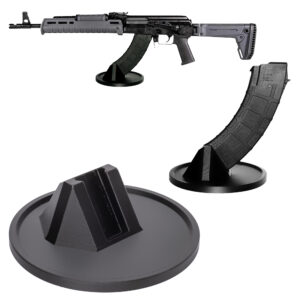
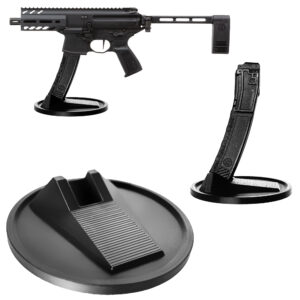
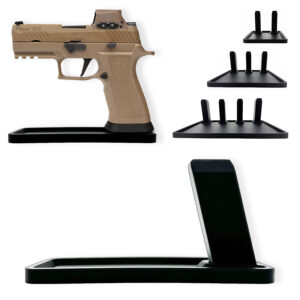


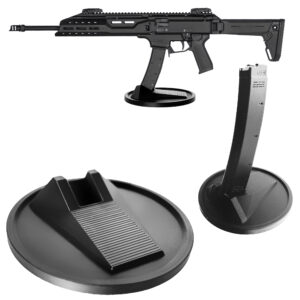
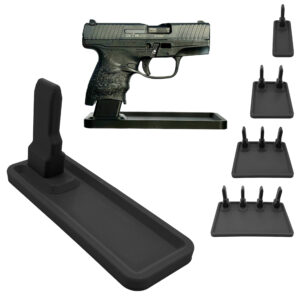

Colt
Colt M4 Carbine
Colt LE6920
Colt AR-15 A4
Daniel Defense
DDM4 V7
DDM4 V9
DDM4 V11
DDM4 ISR (Integrally Suppressed Rifle)
Smith & Wesson (S&W)
M&P15 Sport II
M&P15 Tactical
M&P15T
Bravo Company Manufacturing (BCM)
BCM Recce-16
BCM Recce-14
BCM MCMR Series
Aero Precision
M4E1 Series
AC-15
AR15 Pistol (Various Configurations)
Ruger
Ruger AR-556
Ruger SR-556
Ruger AR-556 MPR (Multi-Purpose Rifle)
Springfield Armory
Saint Victor
Saint Edge
Saint AR-15
PSA (Palmetto State Armory)
PSA PA-15
PSA AR-V
PSA Jakl (AR Pistol)
FN America
FN 15 Tactical Carbine
FN 15 Patrol
FN 15 DMR
Wilson Combat
Recon Tactical
Super Sniper
Protector Carbine
SIG Sauer
SIG M400 Tread
SIG M400 Elite
SIG M400 SDI
LWRC International
IC DI (Direct Impingement)
IC SPR
IC A5
Bushmaster Guns
XM-15 QRC
Bushmaster MOE
XM-15 Patrolman
Rock River Arms
LAR-15 Entry Tactical
LAR-15 Predator
LAR-15 Elite Comp
Stag Arms
Stag 15 Tactical
Stag 15L (Left-Handed Models)
Stag 15 Valkyrie
Noveske Rifleworks
Noveske Gen 4 N4
Noveske Space Invader (AR Pistol)
Noveske Recon
Anderson Manufacturing
AM-15 Optic Ready
AM-15 M4 Carbine
AM-15 Precision Rifle
Adams Arms
AA-15 Piston Rifle
P2 AARS (Adams Arms Rifle Series)
Black Rain Ordnance
SPEC15 Series
BRO Predator
Fallout 15
Diamondback Guns
DB15 Series
DB15CCMLB
DB15EB
Del-Ton Inc.
DTI-15
Del-Ton Echo 316H
Sierra 316M
Windham Weaponry
Windham SRC
Windham VEX-SS
Windham RMCS-4 (Caliber Conversion System)
Christensen Arms
CA-15 G2
CA-15 Recon
CA-15 Titanium Edition
Patriot Ordnance Factory (POF-USA)
Renegade Plus
P415 Edge
Revolution DI
LaRue Tactical
PredatAR
OBR (Optimized Battle Rifle)
LaRue Stealth 2.0
Battle Arms Development
Workhorse Patrol Carbine
BAD556-LW (Lightweight)
Authority Elite Rifle
Faxon Guns
Ascent AR-15
FX-19 (AR Pistol)
Streamline Ultralight Series
KE Arms
KE-15 SLT (Super Lightweight Tactical)
KE-15 Scout Carbine
Primary Weapons Systems (PWS)
MK1 MOD 2-M
MK116 PRO
MK107 (Piston AR Pistol)
ZEV Technologies
ZEV Core Elite Rifle
ZEV AR15 Billet Rifles
Franklin Armory
BFSIII AR-C1
Militia Model
F17-L (Chambered in .17 WSM)
Seekins Precision
SP15 DMR
NX15 Skeletonized Rifle
Havak Bravo
Aero Precision (Additional Models)
EPC-9 (Pistol Caliber ARs)
VG6 AR Rifles
Barrett Guns
REC7 DI
REC7 Gen II
CMMG
MK4 RCE
Resolute 300
Banshee (AR Pistol)
DPMS Panther Arms
Panther Oracle
Panther LR-308
H&K (Heckler & Koch)
HK MR556A1
HK416 (Military Variant)
Rock Island Armory (Armscor)
VR-80 Tactical AR (Shotgun AR Platform)
Troy Industries
Troy SPC-A3
Troy PAR (Pump Action AR)
Wilson Tactical
Tactical Recon AR
Protector Series
F1 Guns
FDR-15 Skeletonized Rifle
BDRx-15 Series
Juggernaut Tactical
JT-15
JT-10 Precision Rifle
AeroSurplus
Surplus AR-15 Rifles (Budget Models)
Thunder Tactical
AR-15 Basic Carbine
Tactical Builder Sets
Radical Guns
RF-15
Forged AR-Series
Dark Storm Industries
DS-15 Featureless Rifles
DS-10 Typhoon
DRD Tactical
Paratus
Aptus AR Rifles
Bear Creek Arsenal
BCA-15
AR Complete Upper Builds
Aero Survival Rifles (ASI)
ASR Tactical Series
Tactical Edge
WARFIGHTER Series
AR-15 Lightweight Rifles
Lone Star Armory
TX15 DMR
TX15 Carbine
HERA Arms
HERA H7
HERA AR-15 Lower Builds
IWI (Israeli Weapon Industries)
Zion-15
DRD Tactical
Tactical Modular Rifles
Quick-Takedown Rifles
V Seven Weapons
1776 Rifle
Hyperlite Rifle
Core Rifle Systems
Core15 Tac III
Core15 Patrol Rifle
Armalite (Original AR-15 Creator)
M15 Tactical
M15 A4 Carbine
DEF15 (Defensive Sporting Rifle Series)
PSA (Palmetto State Armory Additional Models)
PSAK-47 Hybrid (AR-AK Style Hybrid)
PSA Dagger (Pistol Caliber Configurations)
Odin Works
OTR-15
Odin Recon Rifle
Maxim Defense
MDX-508 PDX (Compact AR Pistol)
MDX-510 Rifle